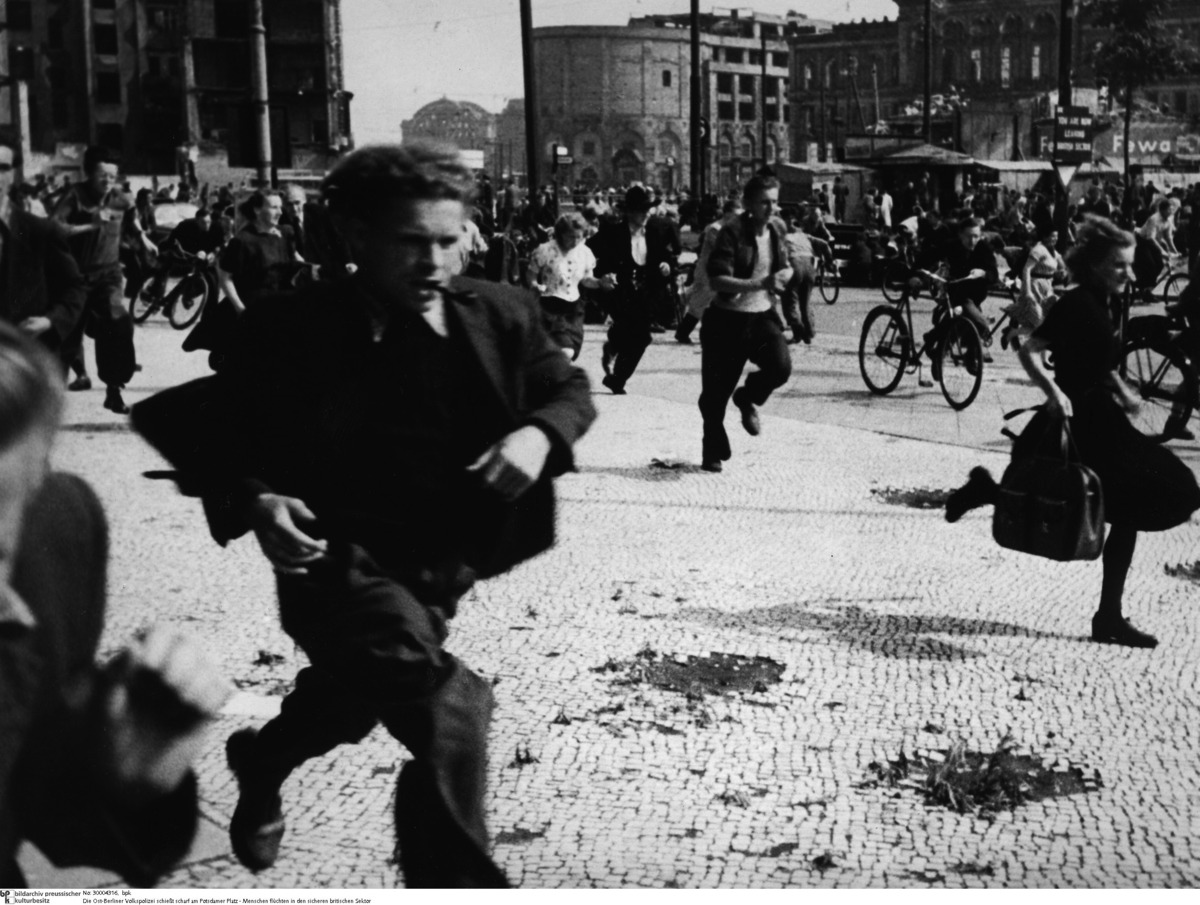Abstract
On June 16, 1953, East Berlin construction workers abandoned their
work sites on Stalinallee and at Friedrichshain Hospital to protest
increased work quotas. The workers came together in a spontaneous march,
which wound through East Berlin, gathering size and strength along the
way. By the time the demonstrators reached the House of Ministries (at
the corner of Wilhelmstraße and Leipziger Straße), their ranks had
swelled to about 10,000. There, they gave voice to extreme discontent
and demanded the resignation of the government and the scheduling of
free elections – all of which occurred without any intervention by the
People’s Police [Volkspolizei]. On
the next morning, June 17th, tens of thousands of demonstrators,
apparently encouraged by the lack of police response on the 16th,
assembled in the streets of East Berlin and in front of the House of
Ministries. This time, military-style police units
[Kasernierte Volkspolizei], which had
been deployed to protect the House of Ministries, repelled the crowd
with rubber batons and warning shots. Soviet tanks rolled into East
Berlin, and the Soviet military commandant declared a state of
emergency. Many of the demonstrators fled down Leipziger Straße and
across Potsdamer Platz into the adjacent British sector.
The day’s protests were not limited to East Berlin: strikes and
protest demonstrations spread to more than 700 East German localities,
bringing more than a million people to the streets. Demonstrators
demanded extensive political and social reform. In the course of the
violent suppression of the uprising, thousands of protesters were
arrested and many were killed. Newer estimates on the number of victims
vary widely, ranging from 55 to 300 deaths.
